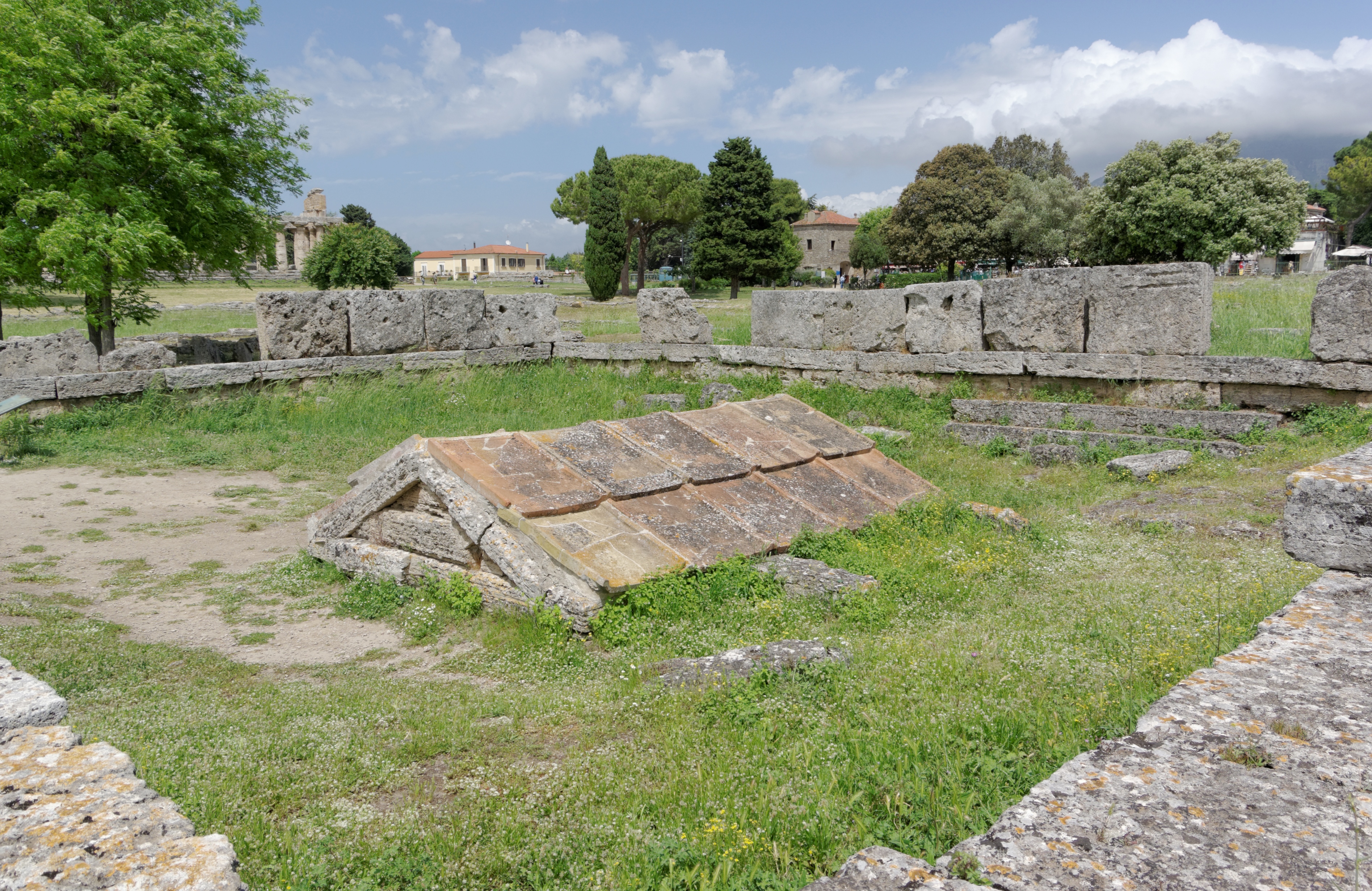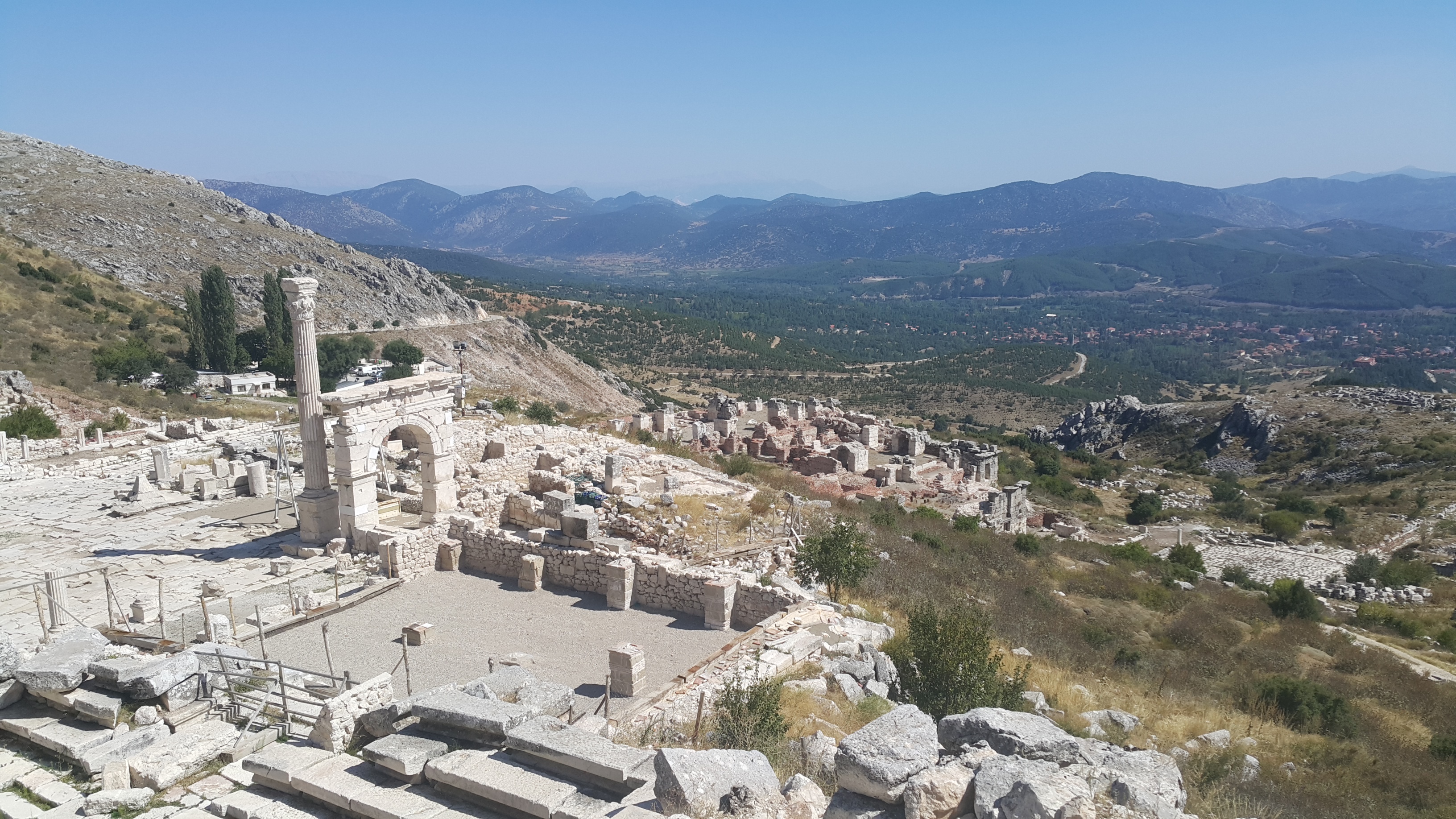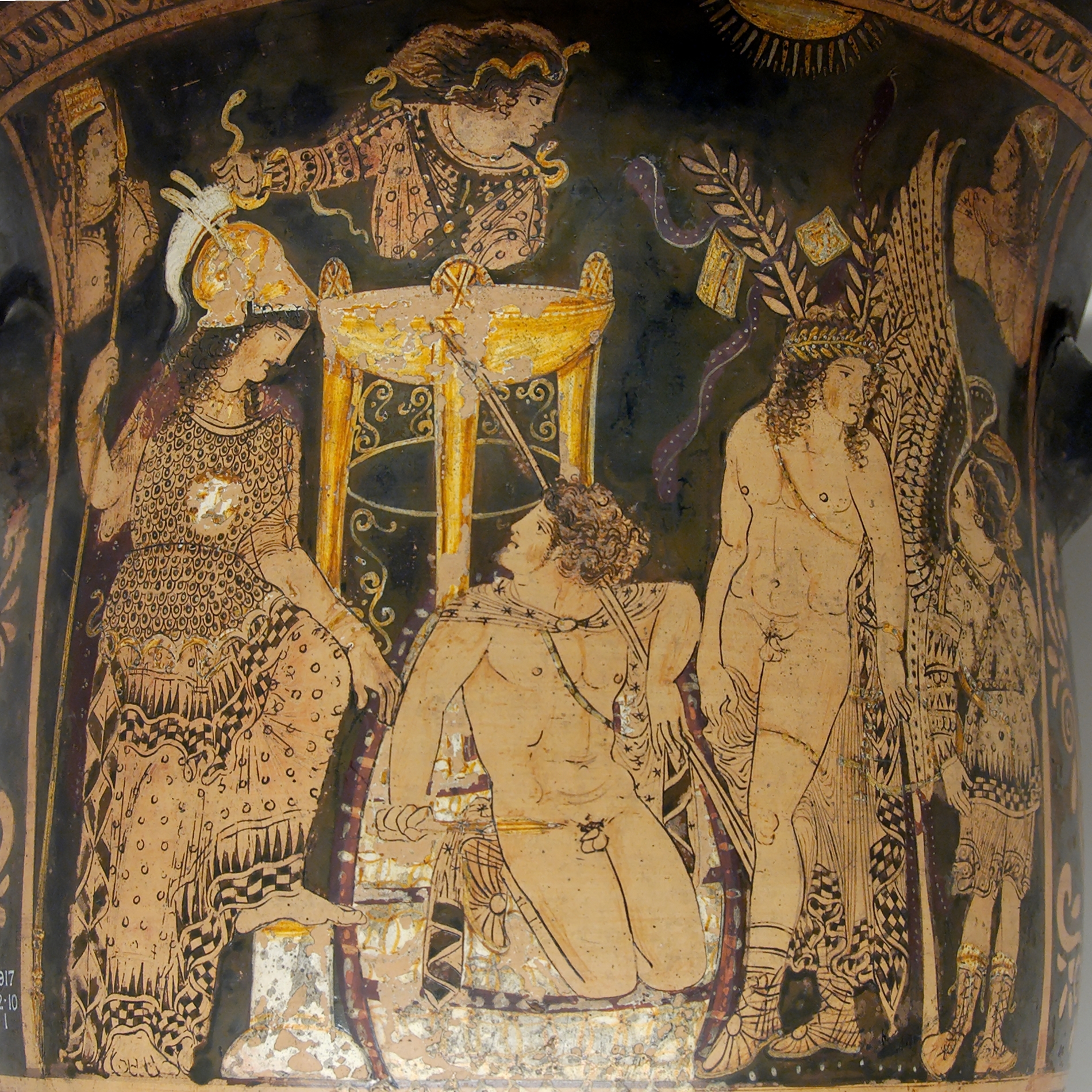|
Heroön
A heroön or heroon (plural heroa) (; , pl. ), also latinized as ''heroum'', is a shrine dedicated to an ancient Greek or Roman hero and used for the commemoration or cult worship of the hero. They were often erected over his or her supposed tomb or cenotaph. Description The Romans and the Greeks practised an extensive and widespread cult of heroes. Heroes played a central role in the life of a ''polis'', giving the city a shared focus for its identity. The cult typically centred on the heroön in which the hero's bones were usually believed to be contained. In a sense, the hero was considered still to be alive; he was offered meals and was imagined to be sharing feasts. His allegiance was seen as vitally important to the continued well-being of the city. This led to struggles between Greek cities for control of heroic remains. Greek literature records how Cimon of Athens avenged the death of the legendary hero Theseus in 469 BC, finding a set of bones allegedly belonging to ... [...More Info...] [...Related Items...] OR: [Wikipedia] [Google] [Baidu] |
Sagalassos - Heroon
Sagalassos ( el, Σαγαλασσός), also known as Selgessos ( el, Σελγησσός) and Sagallesos ( el, Σαγαλλησός), is an archaeological site in southwestern Turkey, about 100 km north of Antalya (ancient Attaleia) and 30 km from Burdur and Isparta. The ancient ruins of Sagalassos are 7 km from Ağlasun (as well as being its namesake) in the province of Burdur, on Mount Akdağ, in the Western Taurus mountains range, at an altitude of 1450–1700 metres. In Roman Imperial times, the town was known as the "first city of Pisidia", a region in the western Taurus mountains, currently known as the Turkish Lakes Region. During the Hellenistic period it was already one of the major Pisidian towns. Introduction The urban site was laid out on various terraces at an altitude between 1400 and 1600 m. After suffering from a major earthquake in the early sixth century CE, the town managed to recover, but a cocktail of epidemics, water shortages, a ... [...More Info...] [...Related Items...] OR: [Wikipedia] [Google] [Baidu] |
Orestes (mythology)
In Greek mythology, Orestes or Orestis (; grc-gre, Ὀρέστης ) was the son of Clytemnestra and Agamemnon, and the brother of Electra. He is the subject of several Ancient Greek plays and of various myths connected with his madness and purification, which retain obscure threads of much older ones. Etymology The Greek name Ὀρέστης, having become "Orestēs" in Latin and its descendants, is derived from Greek ὄρος (óros, “mountain”) and ἵστημι (hístēmi, “to stand”), and so can be thought to have the meaning "stands on a mountain". Greek literature Homer In the Homeric telling of the story, Orestes is a member of the doomed house of Atreus, which is descended from Tantalus and Niobe. He is absent from Mycenae when his father, Agamemnon, returns from the Trojan War with the Trojan princess Cassandra as his concubine, and thus not present for Agamemnon's murder by Aegisthus, the lover of his wife, Clytemnestra. Seven years later, Orestes retu ... [...More Info...] [...Related Items...] OR: [Wikipedia] [Google] [Baidu] |
Alexander The Great
Alexander III of Macedon ( grc, wikt:Ἀλέξανδρος, Ἀλέξανδρος, Alexandros; 20/21 July 356 BC – 10/11 June 323 BC), commonly known as Alexander the Great, was a king of the Ancient Greece, ancient Greek kingdom of Macedonia (ancient kingdom), Macedon. He succeeded his father Philip II of Macedon, Philip II to the throne in 336 BC at the age of 20, and spent most of his ruling years conducting a lengthy military campaign throughout Western Asia and ancient Egypt, Egypt. By the age of thirty, he had created one of the List of largest empires, largest empires in history, stretching from Greece to northwestern Historical India, India. He was undefeated in battle and is widely considered to be one of history's greatest and most successful military commanders. Until the age of 16, Alexander was tutored by Aristotle. In 335 BC, shortly after his assumption of kingship over Macedon, he Alexander's Balkan campaign, campaigned in the Balkans and reasserted control ... [...More Info...] [...Related Items...] OR: [Wikipedia] [Google] [Baidu] |
Greek Macedonia
Macedonia (; el, Μακεδονία, Makedonía ) is a geographic and former administrative region of Greece, in the southern Balkans. Macedonia is the largest and Greek geographic region, with a population of 2.36 million in 2020. It is highly mountainous, with most major urban centres such as Thessaloniki and Kavala being concentrated on its southern coastline. Together with Thrace, and sometimes also Thessaly and Epirus, it is part of Northern Greece. Greek Macedonia encompasses entirely the southern part of the wider region of Macedonia, making up 51% of the total area of that region. Additionally, it forms part of Greece's borders with three countries: Bulgaria to the northeast, North Macedonia to the north, and Albania to the northwest. Greek Macedonia incorporates most of the territories of ancient Macedon, a kingdom ruled by the Argeads, whose most celebrated members were Alexander the Great and his father Philip II. Before the expansion of Macedonia under Phi ... [...More Info...] [...Related Items...] OR: [Wikipedia] [Google] [Baidu] |
Vergina
Vergina ( el, Βεργίνα, ''Vergína'' ) is a small town in northern Greece, part of Veria municipality in Imathia, Central Macedonia. Vergina was established in 1922 in the aftermath of the population exchanges after the Treaty of Lausanne and was a separate municipality until 2011, when it was merged with Veroia under the Kallikratis Plan. Vergina is best known as the site of ancient Aigai (Αἰγαί, ''Aigaí'', Latinized: ''Aegae''), the first capital of Macedon. In 336 BC Philip II was assassinated in Aigai's theatre and his son, Alexander the Great, was proclaimed king. In 1977, the burial sites of several kings of Macedon were uncovered, including the tomb of Philip II which had not been disturbed or looted, unlike so many of the other tombs there. The ancient town was also the site of an extensive royal palace. The archaeological museum of Vergina was built to house all the artifacts found at the site and is one of the most important museums in Greece. Aigai ... [...More Info...] [...Related Items...] OR: [Wikipedia] [Google] [Baidu] |
Naples
Naples (; it, Napoli ; nap, Napule ), from grc, Νεάπολις, Neápolis, lit=new city. is the regional capital of Campania and the third-largest city of Italy, after Rome and Milan, with a population of 909,048 within the city's administrative limits as of 2022. Its province-level municipality is the third-most populous metropolitan city in Italy with a population of 3,115,320 residents, and its metropolitan area stretches beyond the boundaries of the city wall for approximately 20 miles. Founded by Greeks in the first millennium BC, Naples is one of the oldest continuously inhabited urban areas in the world. In the eighth century BC, a colony known as Parthenope ( grc, Παρθενόπη) was established on the Pizzofalcone hill. In the sixth century BC, it was refounded as Neápolis. The city was an important part of Magna Graecia, played a major role in the merging of Greek and Roman society, and was a significant cultural centre under the Romans. Naples served a ... [...More Info...] [...Related Items...] OR: [Wikipedia] [Google] [Baidu] |
Paestum
Paestum ( , , ) was a major ancient Greek city on the coast of the Tyrrhenian Sea in Magna Graecia (southern Italy). The ruins of Paestum are famous for their three ancient Greek temples in the Doric order, dating from about 550 to 450 BC, which are in an excellent state of preservation. The city walls and amphitheatre are largely intact, and the bottom of the walls of many other structures remain, as well as paved roads. The site is open to the public, and there is a modern national museum within it, which also contains the finds from the associated Greek site of Foce del Sele. Solinus wrote that it was established by Dorians. After its foundation by Greek colonists under the name of Poseidonia ( grc, Ποσειδωνία), it was eventually conquered by the local Lucanians and later the Romans. The Lucanians renamed it to Paistos and the Romans gave the city its current name. As Pesto or Paestum, the town became a bishopric (now only titular), but it was abandoned in the E ... [...More Info...] [...Related Items...] OR: [Wikipedia] [Google] [Baidu] |
Sicily
(man) it, Siciliana (woman) , population_note = , population_blank1_title = , population_blank1 = , demographics_type1 = Ethnicity , demographics1_footnotes = , demographics1_title1 = Sicilian , demographics1_info1 = 98% , demographics1_title2 = , demographics1_info2 = , demographics1_title3 = , demographics1_info3 = , timezone1 = CET , utc_offset1 = +1 , timezone1_DST = CEST , utc_offset1_DST = +2 , postal_code_type = , postal_code = , area_code_type = ISO 3166 code , area_code = IT-82 , blank_name_sec1 = GDP (nominal) , blank_info_sec1 = €89.2 billion (2018) , blank1_name_sec1 = GDP per capita , blank1_info_sec1 ... [...More Info...] [...Related Items...] OR: [Wikipedia] [Google] [Baidu] |
Agrigento
Agrigento (; scn, Girgenti or ; grc, Ἀκράγας, translit=Akrágas; la, Agrigentum or ; ar, كركنت, Kirkant, or ''Jirjant'') is a city on the southern coast of Sicily, Italy and capital of the province of Agrigento. It was one of the leading cities of Magna Graecia during the Fifth-century Athens, golden age of Ancient Greece BC. History Akragas was founded on a plateau overlooking the sea, with two nearby rivers, the Sant'Anna (river), Hypsas and the Acragas, after which the settlement was originally named. A ridge, which offered a degree of natural fortification, links a hill to the north called Colle di Girgenti with another, called Rupe Atenea, to the east. According to Thucydides, it was founded around 582-580 BC by Ancient Greece, Greek colonists from Gela in eastern Sicily, with further colonists from Crete and Rhodes. The founders (Oikistes, ''oikistai'') of the new city were Aristonous and Pystilus. It was the last of the major Greek colonies ... [...More Info...] [...Related Items...] OR: [Wikipedia] [Google] [Baidu] |
Greece
Greece,, or , romanized: ', officially the Hellenic Republic, is a country in Southeast Europe. It is situated on the southern tip of the Balkans, and is located at the crossroads of Europe, Asia, and Africa. Greece shares land borders with Albania to the northwest, North Macedonia and Bulgaria to the north, and Turkey to the northeast. The Aegean Sea lies to the east of the Geography of Greece, mainland, the Ionian Sea to the west, and the Sea of Crete and the Mediterranean Sea to the south. Greece has the longest coastline on the Mediterranean Basin, featuring List of islands of Greece, thousands of islands. The country consists of nine Geographic regions of Greece, traditional geographic regions, and has a population of approximately 10.4 million. Athens is the nation's capital and List of cities and towns in Greece, largest city, followed by Thessaloniki and Patras. Greece is considered the cradle of Western culture, Western civilization, being the birthplace of Athenian ... [...More Info...] [...Related Items...] OR: [Wikipedia] [Google] [Baidu] |
Mycenae
Mycenae ( ; grc, Μυκῆναι or , ''Mykē̂nai'' or ''Mykḗnē'') is an archaeological site near Mykines in Argolis, north-eastern Peloponnese, Greece. It is located about south-west of Athens; north of Argos; and south of Corinth. The site is inland from the Saronic Gulf and built upon a hill rising above sea level. In the second millennium BC, Mycenae was one of the major centres of Greek civilization, a military stronghold which dominated much of southern Greece, Crete, the Cyclades and parts of southwest Anatolia. The period of Greek history from about 1600 BC to about 1100 BC is called Mycenaean in reference to Mycenae. At its peak in 1350 BC, the citadel and lower town had a population of 30,000 and an area of 32 hectares. The first correct identification of Mycenae in modern literature was during a survey conducted by Francesco Grimani, commissioned by the Provveditore Generale of the Kingdom of the Morea in 1700, who used Pausanias's description of the Lio ... [...More Info...] [...Related Items...] OR: [Wikipedia] [Google] [Baidu] |
Tholos Tomb
A beehive tomb, also known as a tholos tomb (plural tholoi; from Greek θολωτός τάφος, θολωτοί τάφοι, "domed tombs"), is a burial structure characterized by its false dome created by corbelling, the superposition of successively smaller rings of mudbricks or, more often, stones. The resulting structure resembles a beehive, hence the traditional English name. Tholoi were used for burial in several cultures in the Mediterranean and West Asia, but in some cases they were used for different purposes such as homes (Cyprus), rituals (Bulgaria, Syria), and even fortification (Spain, Sardinia). Although Max Mallowan used the same name for the circular houses belonging to the Neolithic culture of Tell Halaf (Iraq, Syria and Turkey), there is no relationship between them. Greece In Greece, the vaulted ''tholoi'' are a monumental Late Bronze Age development. Their origin is a matter of considerable debate: were they inspired by the tholoi of Crete which were fi ... [...More Info...] [...Related Items...] OR: [Wikipedia] [Google] [Baidu] |






.jpg)